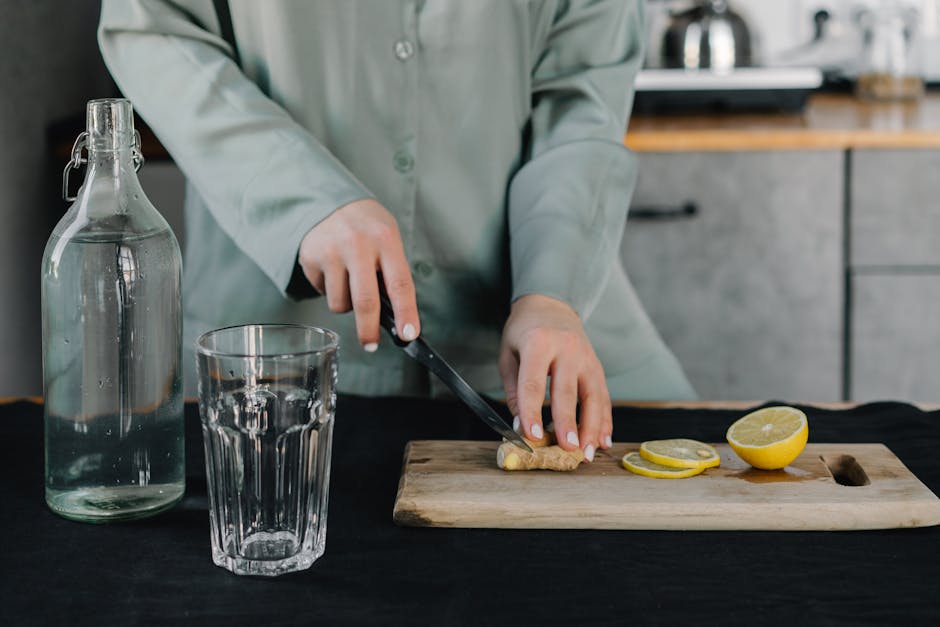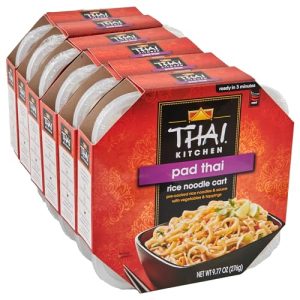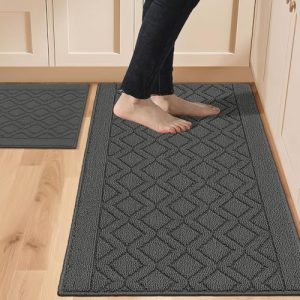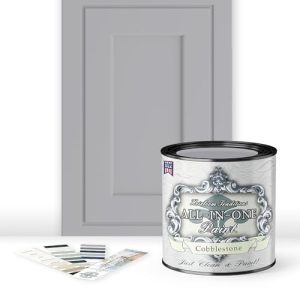Are you curious about what angle your kitchen knife should have? Knowing the right angle can make a huge difference in how sharp your knife stays and how easily it cuts through food.
Whether you’re chopping vegetables or slicing meat, the angle affects your safety, efficiency, and the knife’s lifespan. You’ll discover the perfect knife angles for different tasks and how to keep your blades razor-sharp. Keep reading to unlock the secrets that will transform your cooking experience!
Choosing The Right Angle
Choosing the right angle for your kitchen knife is more important than you might think. The angle influences how sharp your knife will be and how long it stays that way. Understanding this can help you get the most out of your knives, whether you’re slicing vegetables or carving meat.
Common Knife Angles Explained
Most kitchen knives have edge angles between 15 and 25 degrees per side. Japanese knives often have a sharper angle around 15 degrees, making them extremely sharp but slightly more delicate. Western-style knives usually feature a 20 to 25-degree angle, which offers more durability but a bit less sharpness.
If you use your knife for fine slicing or delicate tasks, a sharper angle might suit you better. On the other hand, if your kitchen work involves heavy-duty chopping, a wider angle can prevent your blade from dulling or chipping quickly.
How Angle Affects Cutting Performance
The sharper the angle, the thinner and more precise the edge. This means your knife will cut through food smoothly with less effort. However, a very sharp edge can wear down faster and may require more frequent sharpening.
Wider angles create a tougher edge that can handle tougher ingredients like bones or hard vegetables. But this edge might feel less sharp and require more force when cutting. Have you noticed how some knives glide effortlessly while others feel like they’re pushing through? That’s the angle at work.
Think about your cooking style and what foods you cut most often. What kind of knife angle will give you the balance between sharpness and durability you need? Your choice here directly impacts your kitchen efficiency and enjoyment.
Types Of Kitchen Knives And Their Angles
Kitchen knives come in many types, each designed for specific tasks. The angle of the blade edge affects how sharp and durable the knife is. Different knives have different edge angles to suit their purpose. Knowing these angles helps you understand how to use and maintain your knives.
Chef’s Knife
The chef’s knife usually has a blade angle between 15 and 20 degrees per side. This angle offers a good balance of sharpness and strength. It slices, chops, and dices a wide range of ingredients. A sharper angle means better cutting but less durability.
Paring Knife
Paring knives have a sharper angle, often around 12 to 15 degrees per side. This sharp edge helps with precise tasks like peeling and trimming. The thin blade allows for detailed work. The sharper angle needs careful handling to avoid damage.
Santoku Knife
Santoku knives usually feature an edge angle between 14 and 16 degrees per side. They are great for slicing, dicing, and mincing. The angle gives a sharp yet strong edge. This makes the Santoku versatile in many kitchen tasks.
Slicing Knife
Slicing knives have a slightly wider angle, about 20 degrees per side. The edge is designed for smooth, thin cuts of cooked meat and fish. The wider angle adds strength for slicing through tougher textures. It keeps the blade sharp longer during slow cutting.
Techniques For Maintaining The Angle
Maintaining the correct angle while sharpening your kitchen knife is crucial for keeping it sharp and effective. If you don’t keep a consistent angle, your blade can become dull faster or even get damaged. Let’s explore practical techniques that help you hold and maintain that perfect angle every time you sharpen.
Using A Sharpening Stone
A sharpening stone gives you full control over the angle, but it requires steady hands and practice. Start by placing the knife’s edge against the stone at the angle you want—usually between 15 to 20 degrees for kitchen knives.
One trick I learned is to imagine the angle as a small wedge between the blade and the stone. Holding that wedge steady, slide the blade along the stone in smooth strokes. You can use your free hand to gently press on the blade’s spine, helping keep the angle consistent.
Guided Sharpeners And Tools
Guided sharpeners have built-in angle guides that take the guesswork out of sharpening. These tools hold your knife at a fixed angle, so you don’t have to worry about maintaining it yourself.
If you want precise and repeatable results without much effort, guided sharpeners are a great choice. They are especially helpful if you’re new to sharpening or want to avoid damaging your blade with incorrect angles.
Handheld Sharpeners
Handheld sharpeners offer convenience but require attention to how you hold the knife. Most have angled slots designed to maintain the right sharpening angle for you.
Keep the knife steady and pull it through the slots smoothly. Avoid pressing too hard—let the sharpener do the work. Have you noticed how a quick touch-up with a handheld sharpener can bring back the edge in seconds? It’s all about keeping that angle consistent while you sharpen.
Effects Of Improper Angles
Using the wrong angle when cutting with a kitchen knife causes many problems. It affects the knife’s sharpness, cutting efficiency, and safety. Understanding these effects helps keep your knife in good shape and your kitchen safe.
Dull Blades And Inefficient Cuts
Cutting at the wrong angle wears down the blade quickly. The edge loses sharpness faster than normal. This makes slicing food harder and less precise. You end up using more force and time to cut simple ingredients.
Damage To Knife Edge
Improper angles cause chips and nicks on the blade edge. The metal bends or breaks under wrong pressure. This damage shortens the life of your knife. Repairing or sharpening becomes more difficult and costly.
Safety Concerns
Using an incorrect angle reduces control over the knife. The blade slips or catches unexpectedly. This increases the risk of cuts or injuries in the kitchen. Safe cutting relies on the right blade angle and steady handling.
Tips For Perfect Cutting Every Time
Cutting with precision is key in the kitchen. A good angle kitchen knife helps achieve this. Here are some tips for perfect cutting every time. Follow these guidelines for efficient and safe cutting.
Holding The Knife Correctly
Grip the handle firmly. Place your thumb and index finger on the blade’s base. This provides stability and control. Keep your wrist relaxed to avoid strain. A proper grip enhances cutting accuracy.
Consistent Cutting Motion
Use a smooth, even motion. Avoid chopping with excessive force. Let the knife do the work. Start with a gentle rocking motion. This reduces the risk of uneven cuts.
Regular Maintenance
Keep your knife sharp. A dull knife causes accidents and uneven cuts. Use a sharpening stone or steel regularly. Clean the knife after each use. Store it in a safe place to maintain its edge.
Frequently Asked Questions
What Is The Ideal Angle For A Kitchen Knife Blade?
The ideal kitchen knife angle ranges between 15° and 20° per side. This angle offers sharpness and durability, making cutting efficient and precise. Japanese knives often have 15°, while Western knives lean toward 20°. Choosing the right angle depends on knife type and intended use.
How Does Blade Angle Affect Kitchen Knife Performance?
Blade angle impacts sharpness and edge retention. A smaller angle (15°) creates a sharper but less durable edge. A wider angle (20°) offers a tougher edge but less sharpness. Proper angle ensures balance between cutting efficiency and blade longevity.
Can I Sharpen My Kitchen Knife At Home Correctly?
Yes, you can sharpen your kitchen knife at home using whetstones or angle guides. Maintain the recommended angle consistently during sharpening. Practice and proper tools help achieve a sharp edge and prolong blade life. Avoid electric sharpeners if unsure, as they may damage the blade.
Why Do Japanese Knives Have Different Blade Angles?
Japanese knives typically have a 15° angle, providing exceptional sharpness for precise cutting tasks. Their thinner edges suit delicate slicing but require careful handling. The angle reflects traditional craftsmanship focused on fine cutting rather than heavy-duty tasks.
Conclusion
Choosing the right angle for your kitchen knife matters a lot. It affects how sharp and strong the blade stays. A smaller angle means a sharper edge but less strength. A larger angle gives more durability but less sharpness. Think about what you cut most often.
Then pick an angle that fits your needs. Keep your knife sharp and clean. This helps it work better and last longer. Understanding knife angles makes cooking easier and safer. Simple steps lead to better results in the kitchen.

Sophie Hartwell is the founder of KitchenQuik.com, where she shares kitchen tips, smart cooking hacks, and the best product picks to make everyday cooking easier and more enjoyable.




